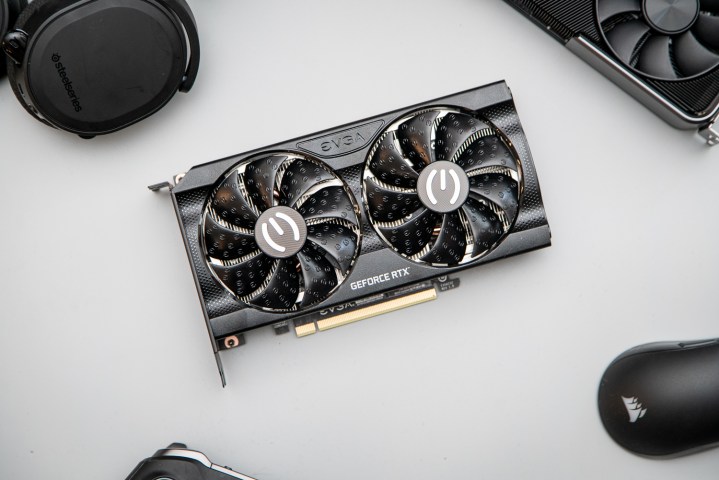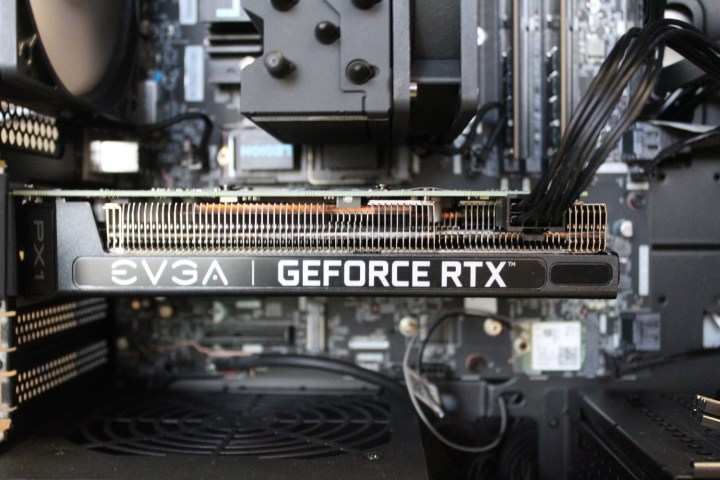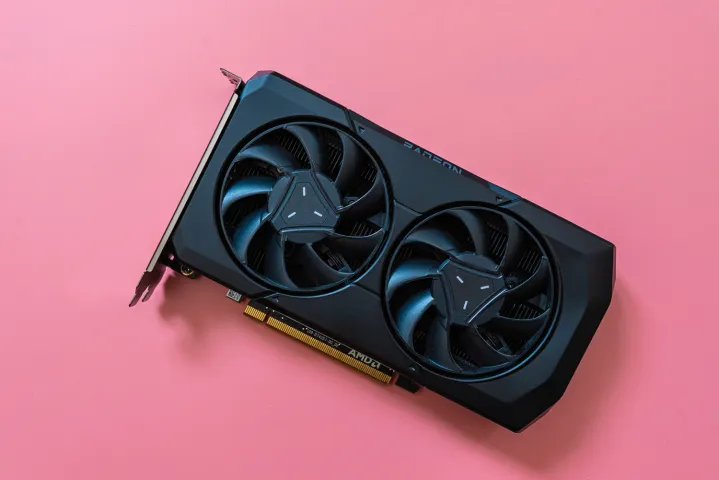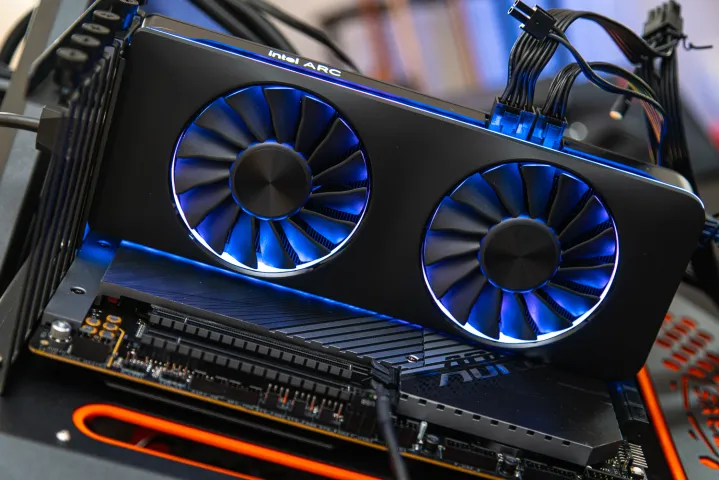
Nvidia’s GTX 1650 is nothing short of a legendary graphics card. The humble, budget-focused GPU has achieved a massive status among PC gamers, sitting at the top of the Steam hardware survey for years. It’s taken a back seat to Nvidia’s newer RTX 3060 in recent months, but it’s still owned by around 4% to 5% of gamers who take part in the Steam hardware survey.
It’s starting to age out of relevance, however. The GTX 1650 is four years old, and it’s struggling to keep up with modern games like Alan Wake 2 and Avatar: Frontiers of Pandora. Although the GTX 1650 is still a great option for low-lift esports titles like Overwatch 2 and Valorant, you should upgrade if you want to experience AAA games in 2024 and beyond.
We’re going to run down the best upgrade options if you’re coming from the GTX 1650, keeping in mind the budget nature of that graphics card. That means limiting options to GPUs that are as close to the $160 to $200 price tag you’d see on a GTX 1650 and focusing on 1080p gaming.
Nvidia RTX 3060

Without a doubt, the best GPU upgrade you can make from the GTX 1650 is Nvidia’s own RTX 3060. There’s a reason this GPU has slowly overtaken the GTX 1650 in 1080p gaming PCs. The RTX 3060, at its worst, is twice as fast as the GTX 1650, and close to three times as fast at its best.
You expect a massive jump in raw performance out of a newer (and more expensive) GPU, but the RTX 3060 has two other tricks. For starters, it supports ray tracing. You may not be able to use ray tracing in more demanding titles like Cyberpunk 2077 or Alan Wake 2, but less demanding implementations like Resident Evil 4 are certainly on the table.
More importantly, the RTX 3060 supports Nvidia’s Deep Learning Super Sampling (DLSS). DLSS has been the defining feature of Nvidia’s graphics cards for the last several years, and it’s unfortunately not available on the GTX 1650. It gives the RTX 3060 a lot more legs in those demanding titles like Alan Wake 2, where the older GPU would otherwise struggle.
The hardest sell with the RTX 3060 right now is price. A new one will run you around $280, which isn’t too impressive considering the newer RTX 4060 starts at $300. Thankfully, there’s a vibrant secondhand market for the RTX 3060. At the time of writing, for example, I found the refurbished on Newegg for $210.
AMD RX 7600

If you look at raw performance in our AMD RX 7600 review, AMD’s 1080p GPU actually beats the RTX 3060, and it’s even cheaper at list price. It’s coming in second here due to its relatively disappointing ray tracing performance and the fact that it doesn’t have access to DLSS. That doesn’t mean it’s a bad upgrade option if you’re coming from a GTX 1650, however.
The main draw is that price-to-performance ratio. The RX 7600 comes in at $270, and you can often find it on sale for $250. Overall, the RX 7600 ends up slightly faster than the RTX 3060, but that factors in ray tracing. If you take ray tracing out of the mix, the RX 7600 is sometimes up to 35% faster, as we saw in Cyberpunk 2077.
The lack of strong ray tracing prowess and DLSS is easier to accept at this price. You’re looking for solid all-around performance at 1080p, and for a low price, and that’s exactly what the RX 7600 delivers at $270. It’s quite a bit more expensive than a used RTX 3060, however, and leagues ahead of the original price of the GTX 1650.
Refurbished models are possible, however, with some models as low as $200. You can also shop secondhand, where I’ve seen cards sell for as little as $190. Of course, there are the sales as well. At the time of writing, for example, the is selling at Newegg for $260.
Intel Arc A750

The Intel Arc A750 is undoubtedly the weakest card on this list, but it’s also the cheapest. Intel’s own design comes in at $240, but you’ll commonly find models from ASRock and Sparkle for $220 and sometimes even a straight $200 — for example, is going for $220 right now.
For overall performance, the A750 trades blows with the RTX 3060. It’s slightly ahead in some games like Forza Horizon 5, but slightly behind in others, like Cyberpunk 2077. The main draw is that the Arc A750 is significantly cheaper (at least for a new model) and it comes with similarly powerful ray tracing — something the AMD competition falls short on at this price.
There’s a major trade-offs here for such a low price, however. First, there’s the drivers. Intel has massively improved its drivers since the Arc A750 released, but there are still occasionally games where Intel’s GPUs struggle. The most recent example is Starfield, which wasn’t in working shape for a few weeks after release. Some legacy titles still have issues pop up, too. The most recent Intel driver update claimed a 268% performance jump in Just Cause 4, for example — you don’t get those kind of increases without previous performance issues.
Intel has addressed enough games at this point to justify picking up an Arc GPU. It’s something you should be aware of, however. Intel is still very new to the discrete GPU market, so you may have to endure some growing pains.
That doesn’t leave the A750 dead in the water, though. Due to its performance and how inexpensive it is, the card is still worth considering if you’re on an extreme budget. Unfortunately, the options from AMD and Nvidia around $200 just don’t hold up. The RTX 3050 is significantly underpowered compared to the A750, and AMD’s RX 6500 XT is one of the worst GPUs we’ve ever reviewed.
Time for an upgrade

The GTX 1650 has served its role as a stopgap GPU for a lot of gamers. Arriving just before the brunt of the GPU shortage went into effect, it has remained a low-cost option for PC gamers who just need a discrete graphics card for 1080p gaming. It’s time to upgrade, though.
With the GPU shortage in the rearview mirror, there are several budget options that provide a massive performance boost over the GTX 1650. Not only will you get a big performance bump, but you’ll also have access to new features like ray tracing and DLSS that aren’t available on GTX cards.
The three GPUs we rounded up here are your best options, but always be on the lookout for sales. Other GPUs like the RTX 4060 and RX 6700 XT are excellent options if you can find a particularly good deal on them.




